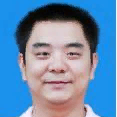
Xin Yang
Work place: Institute for Pattern Recognition and Artificial Intelligence (IPRAI), “Key Laboratory of Sci. and Tech. for National Defence”, Huazhong University of Science and Technology (HUST), Wuhan, China, 430074
E-mail: xinyanghust@gmail.com
Website:
Research Interests: Computer Vision, Pattern Recognition, Planning and Scheduling, Computer Graphics and Visualization, Program Analysis and Transformation
Biography
Xin Yang, who was born in Wuhan, Hubei, China in November 1984, is expecting his Ph.D. degree in Institute for Pattern Recognition & Artificial Intelligence from Huazhong University of Science and Technology (HUST). He received his M.S. in Pattern Recognition & Artificial Intelligence and his B.S. in Electronics and Information Engineering, respectively in 2009 and 2006, from HUST, Wuhan, China. He is a student-member of IEEE and currently interested in Image Processing and Analysis, Computer Vision, Pattern Recognition and Route Planning.
Author Articles
Common Carotid Artery Lumen Segmentation in B-mode Ultrasound Transverse View Images
By Xin Yang Mingyue Ding Liantang Lou Ming Yuchi Wu Qiu Yue Sun
DOI: https://doi.org/10.5815/ijigsp.2011.05.03, Pub. Date: 8 Aug. 2011
To evaluate atherosclerosis, common carotid artery (CCA) lumen segmentation requires outlining the intima contour on transverse view of B-mode ultrasound images. The lumen contours are automatically segmented using a morphology method in this paper. The proposed method is based on self-adaptive histogram equalization, non-linear filtering, Canny edge detector and morphology methods. Experiments demonstrated that the merit (FOM) value of lumen segmentation is 0.705. The comparison between proposed method and manual contours on 180 transverse images of the CCA showed a mean absolute error of 0.47±0.13 mm and mean max distance of 2.08±0.63 mm respectively. These results compare favorably with a clinical need for reducing use variability.
[...] Read more.Research on Fuzzy Enhancement in the Diagnosis of Liver Tumor from B-mode Ultrasound Images
By Wu Qiu Feng xiao Xin Yang Xuming Zhang Ming Yuchi Mingyue Ding
DOI: https://doi.org/10.5815/ijigsp.2011.03.02, Pub. Date: 8 Apr. 2011
Fuzzy enhancement is applied in computer aided diagnosis of liver cancer from B mode ultrasound images as a pre-processing procedure in this paper. It was evaluated with three classifiers including K means, back propagation neural network and support vector machine using 25 features from first order statistic (FOS), gray-level co-occurrence matrix (GLCM), gray-level run-length matrix (GLRLM), Grey level dependant matrix (GLDM) and LAWS. In the analysis of 166 normal liver tissue, 30 hemangioma and 60 malignant tumor, our method improved the classification accuracy of three classifiers (K means, BP neural network and support machine vector) in distinguishing liver cancer, hemangioma and normal liver cancer from B mode ultrasound images. It is proved that fuzzy enhancement as an efficient preprocessing procedure could be used in the computer aided diagnosis system of liver cancer.
[...] Read more.Other Articles
Subscribe to receive issue release notifications and newsletters from MECS Press journals